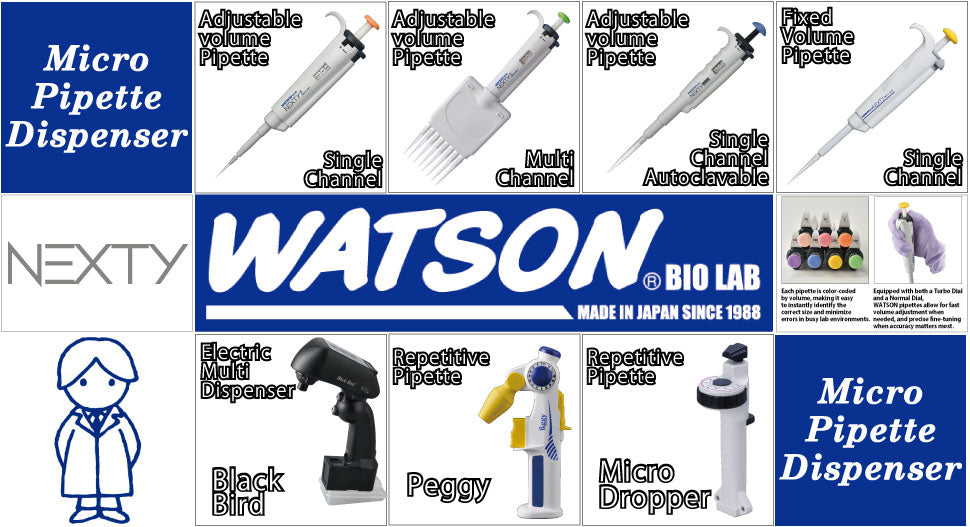KonnichiWATSON!
Choosing the right pipette isn't just about price or popularity – it's about finding the tool that matches your exact lab needs. The wrong pipette can lead to inaccurate results, wasted samples, and frustrated researchers. The right one? It makes workflows smooth, accurate, and efficient.
In this guide, we’ll walk you through how to make the best pipette choice for your specific application.
1. Start With Your Application
The most important factor when choosing a pipette is what you'll be using it for. Consider:
- Are you handling DNA/RNA samples?
- Do you work with cell culture?
- Are you performing serial dilutions, PCR, ELISA?
Tip: The more precise the application, the more critical the accuracy and ergonomics.
2. Determine the Volume Range
Every pipette has a recommended working range. Avoid choosing a pipette that operates at the extreme end of your volume needs.
Common Volume Ranges:
- 0.1 – 2 μL (ultra-low volume)
- 2 – 20 μL
- 20 – 200 μL (standard)
- 100 – 1000 μL (1 mL)
- 1 – 5 mL (macropipettes)
Rule of thumb: Always use the smallest pipette that covers your target volume for maximum accuracy.
3. Manual or Electronic?
Manual Pipettes:
- Affordable, lightweight
- Reliable and simple
- Ideal for general use
Electronic Pipettes:
- Programmed repeat dispensing
- Reduces hand strain and human error
- Best for high-throughput labs or complex protocols
4. Single or Multi-channel?
If you're pipetting into plates (96-well, 384-well, etc.), a multi-channel pipette can save hours.
- Single-channel: Perfect for tubes or occasional work
- Multi-channel: Invaluable for assays, screenings, and batch tasks
5. Ergonomics and Build Quality Matter
Your pipette should feel comfortable, especially if used all day. Look for:
- Lightweight and balanced design
- Smooth plunger movement
- Low force tip ejection
- Certified calibration and quality reports
Bonus: Autoclavable models save time and ensure sterility.
6. Compatibility with Pipette Tips
Mismatched tips cause leaks, poor accuracy, and user frustration. Use tips designed for your pipette, or confirm cross-compatibility.
WATSON pipettes are optimized for WATSON tips – no guesswork, no slipping.
7. Why Choose WATSON?
Our pipettes are made in Japan, calibrated for precision, and trusted by research labs worldwide.
- ISO 9001, 13485 certified
- Each pipette includes an individual calibration report
- Lightweight, ergonomic, and built to last
➡ Compare Our Pipette Models
Final Checklist
Before you buy, ask yourself:
- What is my average volume range?
- How many samples do I process daily?
- Do I need programmability?
- Am I working with plates?
- How often do I recalibrate?
Choosing the right pipette means better results, fewer errors, and happier lab days.
#pipettebuyingguide #labtools #WATSONBioLab #madeinjapan #researchready #precisionpipetting #labworkflow #pipettetips #scienceequipment

